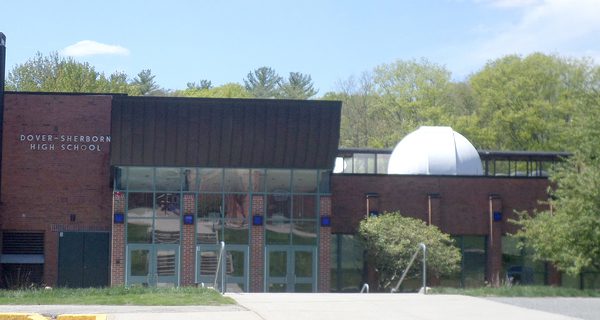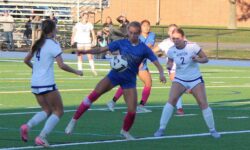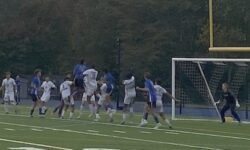By James Kinneen
Hometown Weekly Reporter
The Dover-Sherborn School Committee has voted to approve a hybrid plan of reopening. However, there was some confusion about an amendment regarding what teachers who were unable to return to in class learning would be doing, resulting in the vote’s nullification and a re-vote being held with an added amendment that allows those teachers to teach via online streaming from their home, to a class full of students inside the school building.
Like many towns, Dover-Sherborn is planning on reopening using a hybrid model. Essentially, student are split into two cohorts, one of which goes to school on Monday and Tuesday, then works remotely the rest of the week, and another which works remotely on Monday, Tuesday and Wednesday before going to school on Thursday and Friday.
This plan was made in recognition of the fact that most Dover-Sherborn parents want their kids learning inside of school. However, a faculty survey revealed eighteen percent of the Dover-Sherborn faculty that responded would “struggle to return or would not return” if a school fully opened to in-person learning, while seventeen percent responded the same way regarding the hybrid model. In the fully remote model, every teacher said they would return to teaching.
To deal with the fact that nearly one in five faculty members expressed they were unwilling, unable or “struggling” to return, the Dover-Sherborn School Committee voted for an amendment that allows those teachers to instead teach their classes remotely from home, to a classroom full of students inside the school building.
Before they voted, the committee justified the decision in a couple of different ways. Maggie Charron talked about Dover-Sherborn’s #weareds campaign, and how the Dover-Sherborn schools have put so much time into making sure kids aren’t singled out or bullied for being different. She argued that now was the time for that attitude to extend to Dover-Sherborn’s teachers. “Just as we expect to offer equity to our students based on what they need," she said, "we must respond to our educators who have a clear and present need to work remotely.”
While applauding Maggie’s words, Judi Miller was much more business oriented in her arguments. Miller argued that replacing the teachers who couldn’t teach in a classroom would likely be difficult in the current job market. Legally, the school district would have to hold onto their jobs for twelve weeks if they took a leave of absence. There’s also the very real possibility schools end up having to go completely remote in either the fall or winter.
Hiring short-term substitutes would mean finding job candidates who understand that if the school went completely remote, they’d be let go, as the teacher who was on leave would be willing to work remotely. Alternatively, if you hire a long-term substitute on a one-year contract, the same situation leaves you either turning down the services of a long-tenured Dover-Sherborn teacher or paying a substitute for nothing. There’s also the issue of sick leave. Miller believes a teacher would be able to get sick leave, so the district would be paying them anyway.
Further arguments for the amendment included the childcare mandate in the Families First Coronavirus Response Act, which means many teachers would be eligible for leave anyway. “For those teachers who would be allowed to take leave anyway under the law,” Miller explained, “instead of family leave, we accommodate the need by allowing them to work remotely.” Another advantage was mentioned: if a teacher has to be quarantined due to COVID-19, there’s already a system wherein they could teach their in-class learners from home.
The main issue, however, is that Miller believes it “would be difficult if not impossible to replace teachers who need leave and find teachers who are certified, or even qualified, to teach their courses.”
But teachers aren’t just allowed to say they have medical issues. Under the approved vote, “any teacher who falls into a hardship category as defined below will be permitted to teach their in person classes remotely, while students Zoom in from school, and/or attend the remote academy being created at the middle school.”
As to what constitutes a “hardship category,” essentially teachers need to provide documentation from a healthcare provider that they are in one of the CDC’s COVID-19 high risk categories; provide information from a healthcare provider that indicates one of their family members (with whom they live) falls into the same CDC categories; or can provide documentation that they are unable to work due to a bonafide need to take leave for the care a child, whose school or care provider is closed or unavailable due to COVID-19.
That’s not to say that anyone on the school committee believes the situation to be ideal. When it was pointed out this would mean you’re going to have teachers trying to simultaneously watch their kids and teach a class, many committee members acknowledged that it was an imperfect system, and that there will be adjustments needed to be made. But Judi Miller summarized the Dover-Sherborn School Committee’s general response when she bluntly stated: “I’d rather have one of our really great teachers teaching AP Chem with a five year old child on their lap than someone who is not qualified to teach chem at all teaching our kids.”






















